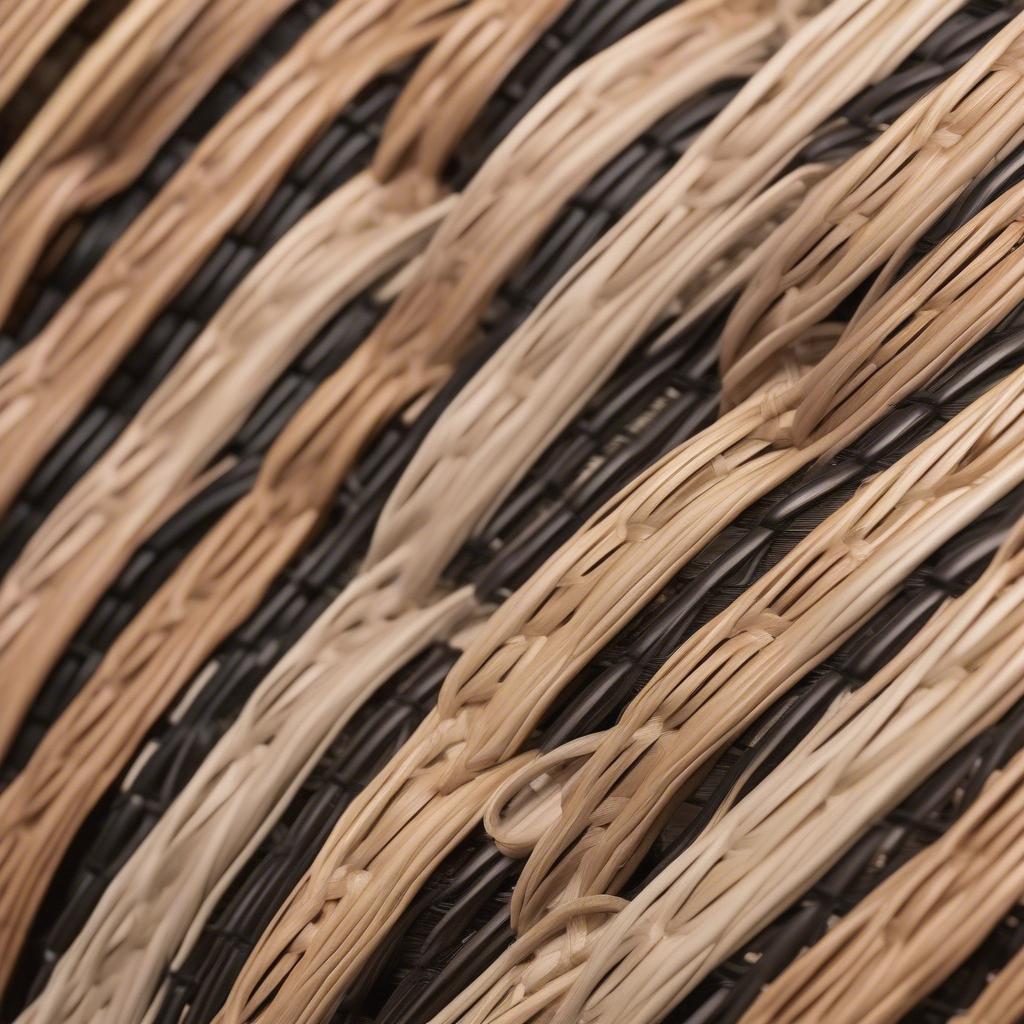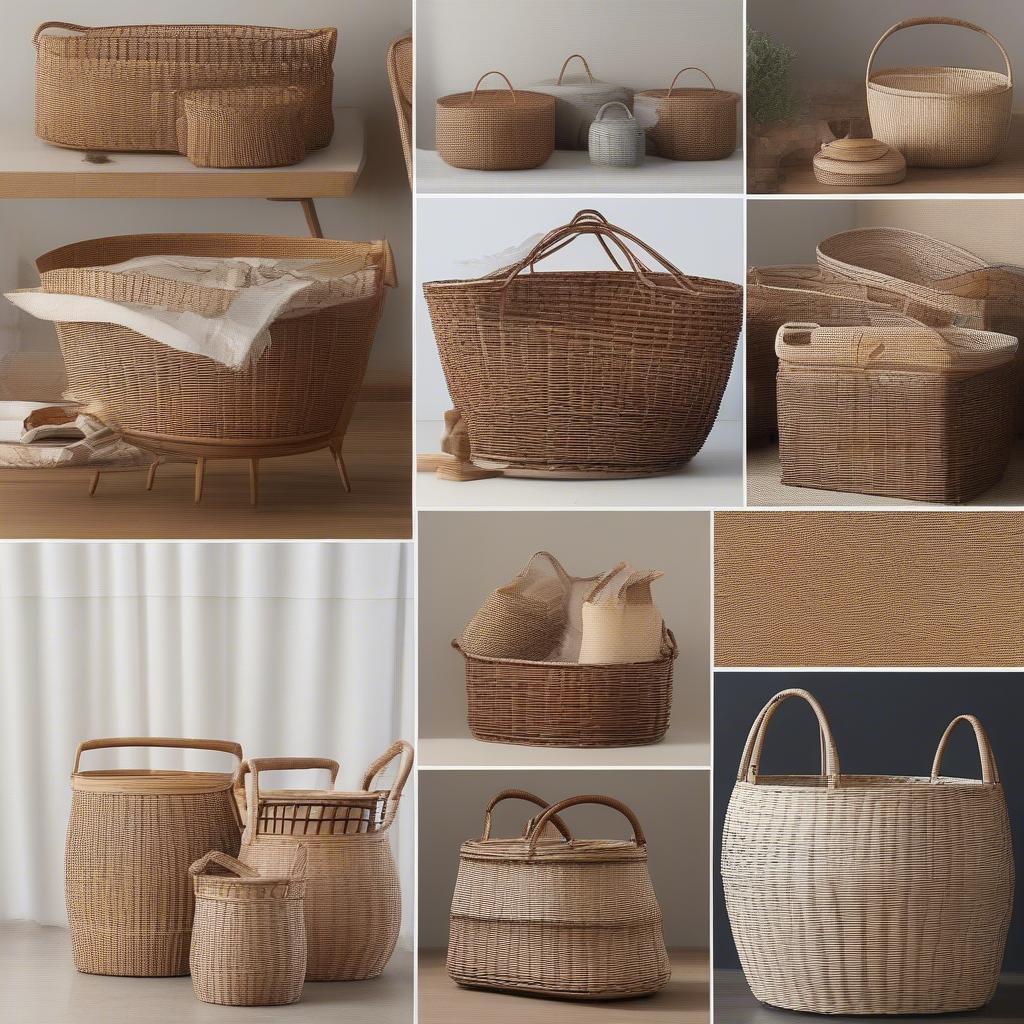Basket Weaving
What Do You Weave Baskets Out of? A Comprehensive Guide to Basketry Materials
What Do You Weave Baskets Out Of? From ancient reeds to modern synthetics, the world of basket weaving encompasses a vast array of materials. This guide dives deep into the diverse materials used in basketry, exploring their unique properties, cultural significance, and practical applications. Whether you’re a seasoned weaver or simply curious about this ancient craft, you’ll discover the fascinating world of basket-making materials.
Exploring Natural Basket Weaving Materials
Natural materials have been the backbone of basketry for centuries. Their inherent flexibility, strength, and availability have made them the go-to choice for basket makers throughout history. Let’s delve into some of the most popular natural materials:
- Wicker: Not a material itself, wicker refers to the process of weaving, often using materials like rattan, willow, or bamboo. Wicker baskets are known for their durability and classic aesthetic.
- Rattan: A vine-like palm native to Southeast Asia, rattan is prized for its strength, flexibility, and resistance to splitting. It’s commonly used for furniture and larger baskets.
- Willow: A fast-growing tree, willow branches provide flexible and lightweight material perfect for delicate baskets and intricate designs. Different varieties offer unique colors and textures.
- Bamboo: A strong and sustainable grass, bamboo’s rigid structure makes it ideal for creating sturdy baskets and other functional items.
- Reed: Found in wetlands, reeds are easily harvested and offer a natural, rustic look for baskets and other woven crafts. They are particularly popular for coiled basketry.
- Seagrass: A durable and water-resistant material, seagrass is commonly used for woven mats, baskets, and other decorative items. Its natural golden color adds a touch of warmth to any space.
- Corn Husks: Traditionally used in Native American basketry, corn husks offer a unique texture and can be dyed in vibrant colors. They are ideal for creating smaller, decorative baskets.
- Pine Needles: These slender needles are surprisingly strong and can be coiled to create beautiful and intricate baskets. The technique requires patience and skill, but the results are truly unique.
The Rise of Synthetic Materials in Basketry
While natural materials remain popular, synthetic options have gained traction in recent years. These materials offer advantages in terms of durability, weather resistance, and cost-effectiveness.
- Plastic: Woven plastic baskets are often used for storage and outdoor applications due to their weather resistance and easy maintenance.
- Synthetic Rattan: Also known as PE rattan, this material mimics the look of natural rattan but is more resistant to fading and cracking, making it ideal for outdoor furniture.
- Recycled Materials: Innovative weavers are increasingly using recycled plastics and other materials to create eco-friendly and stylish baskets. This not only reduces waste but also offers a unique aesthetic.
 Synthetic Basket Weaving Materials: Plastic and Synthetic Rattan
Synthetic Basket Weaving Materials: Plastic and Synthetic Rattan
What Material is Best for Your Basket Weaving Project?
Choosing the right material depends on the intended use of the basket and the desired aesthetic.
- For durable, outdoor baskets: Rattan, synthetic rattan, or plastic are excellent choices.
- For delicate, decorative baskets: Willow, reed, or pine needles are well-suited.
- For eco-conscious projects: Consider using recycled materials or sustainably harvested natural fibers.
A Deeper Look at Rattan and Wicker
Rattan and wicker are often confused, but they are distinct. Rattan is a natural material, while wicker refers to a weaving technique. Rattan is frequently used in wickerwork, but other materials can be used as well.
“Choosing the right material is crucial for a successful basket weaving project,” says Jane Doe, a renowned basket weaver with over 30 years of experience. “Consider the desired functionality and aesthetic of the finished piece.”
 Rattan and Wicker Baskets: Different Styles and Applications
Rattan and Wicker Baskets: Different Styles and Applications
Conclusion: A World of Weaving Possibilities
From natural fibers to synthetic alternatives, the materials used to weave baskets are as diverse as the cultures that have embraced this ancient craft. Understanding the unique properties of each material empowers you to choose the perfect one for your next basket weaving project. So, what do you weave baskets out of? The answer is: almost anything! Explore the world of basketry materials and discover the endless creative possibilities.
FAQ:
- What is the difference between rattan and wicker?
- What are the best materials for outdoor baskets?
- Where can I buy basket weaving materials?
- What is the easiest material for beginners to use?
- How do I care for my woven baskets?
- Are there sustainable basket weaving materials?
- What are some traditional basket weaving techniques?
Call to Action
For further assistance or inquiries, please contact our 24/7 customer service team via Hotline: +84 388 951 999, or visit our offices at Hanoi, Vietnam or Tech Avenue, Suite 12, San Francisco, CA 94105, USA.
